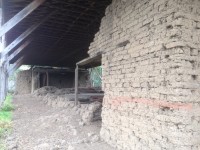My son, James, had raised money for a women’s education program in the Nubian village of Gharb Aswan, Egypt. To hopefully encourage a life-long desire for giving, I have taken him to Gharb Aswan to see with his own eyes, where the money he raised is going. Sadly, for the both of us, turning stones in Egypt would be more esoteric in nature. Within 24 hours of arriving in Cairo, I received the news that my father had passed away. Along with family members back at home, we decided that James and I would continue with our journey through Egypt.
The ride from the airport to the hotel in Cairo was amazing. James had heard my many stories about driving in Egypt, but after experiencing the high speed roller coaster-like chaos himself, all he could muster as he fell from the passenger seat upon arrival was “wow.” My first trip to Egypt was in 2010. This turning stones expedition will by my sixth, so with a little experience under my belt, our first day we travel to Giza to experience the wonder of the pyramids and the Great Sphinx.
I am excited to share what I have learned on previous trips with James. The oldest and largest of Giza Pyramids is known as Khufu or Cheops. This treasure was completed around 2560 BC and constructed to a height of 481 feet. We enter Khufu and climb a narrow staircase to a chamber near the pinnacle of the pyramid. Indeed, as I see the ancient tomb, it becomes clearer than ever that the stories written upon these walls are all about life and death.
Constructed a short distance away, the Great Sphinx guards this sacred ground. Archaeologists continue to debate about the age and purpose of this monument. Though inquiring minds would like to know, it’s sheer grandeur is enough for us. Here James tries his hand at camel riding. I choose to walk due to my propensity for falling. James points out that walking has never prevented me from falling.
We were lucky to have had lunch with an old friend to Sonoma, Ambassador Abderhaman Sala-el-din. In fact, it was the Ambassador who proposed a sister city relationship with Sonoma and the southern Egyptian City of Aswan. The problems in Yemen kept the Ambassador off and on the phone, making arrangements to move consular personnel from Yemen back to Egypt. As the saying goes, “we are not in Kansas anymore.”
After two days in the capital city, we headed to the ancient city of Thebes, now known as Luxor. My friend Yasser, who lives in Aswan, insisted on making the drive north so that we would be picked up by a friendly face at the airport. We then headed into the Luxor countryside to have lunch at Mohamed’s. This is the kind of experience money can’t buy. Mohamed sometimes drives a taxi, raises chickens and grows much his own food. Grape vines hang from a side garden. He was very proud of the grapes and I explained that we too have a few vines growing where I come from. He wears a grey galebeya, has an infectious smile and serves a mean cosa, a fried, rice-stuffed pepper.
The temples around Luxor are all about life and death. This trip my mind is a little fixated on death. I am a little angry that my father couldn’t wait to die until I returned. I saw him the day we left for Egypt. He seemed normal for him, normal for having severe Alzheimer’s. I explained to him that I was once again heading to Egypt. He simply stared out the window into the distance. Maybe more distant than in the past. Throughout Egypt I see the ankh and as I struggle to say goodbye to my father, I am more and more intrigued by this symbol of eternal life. (To be continued)


Be First to Comment